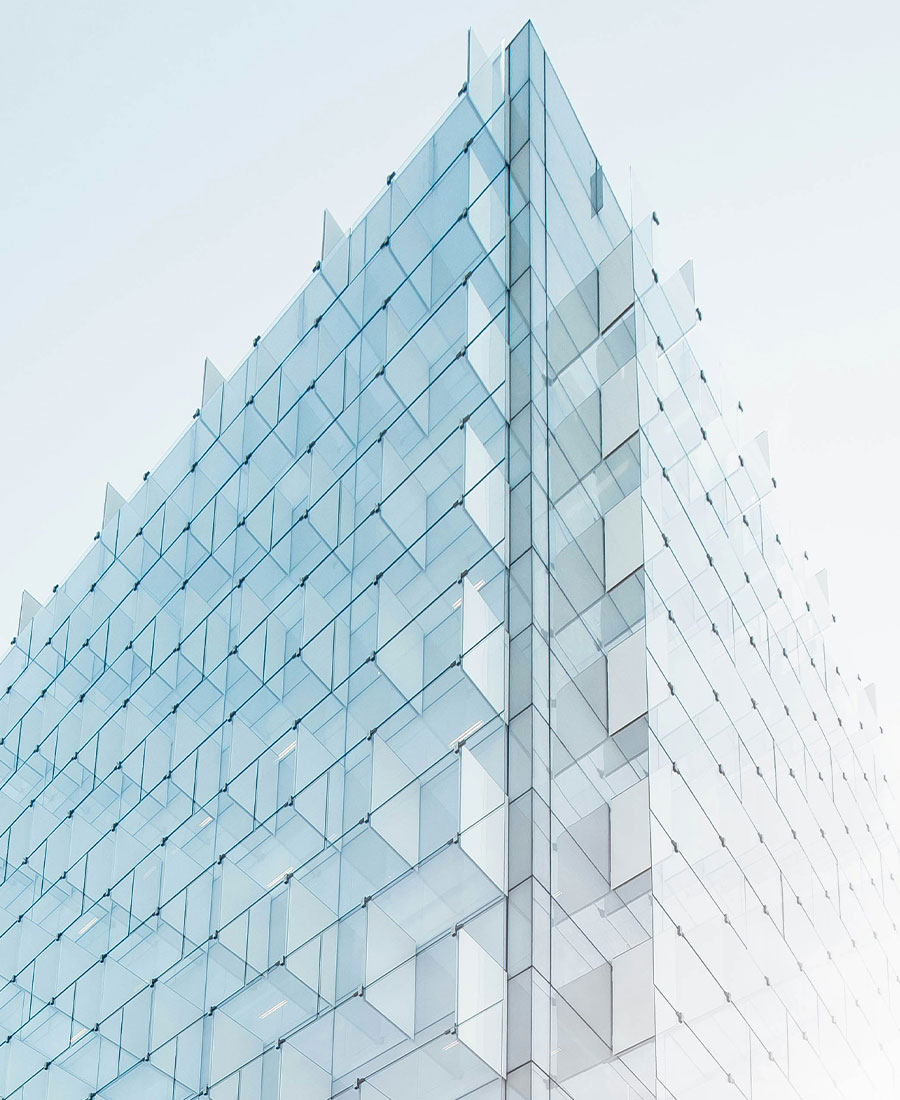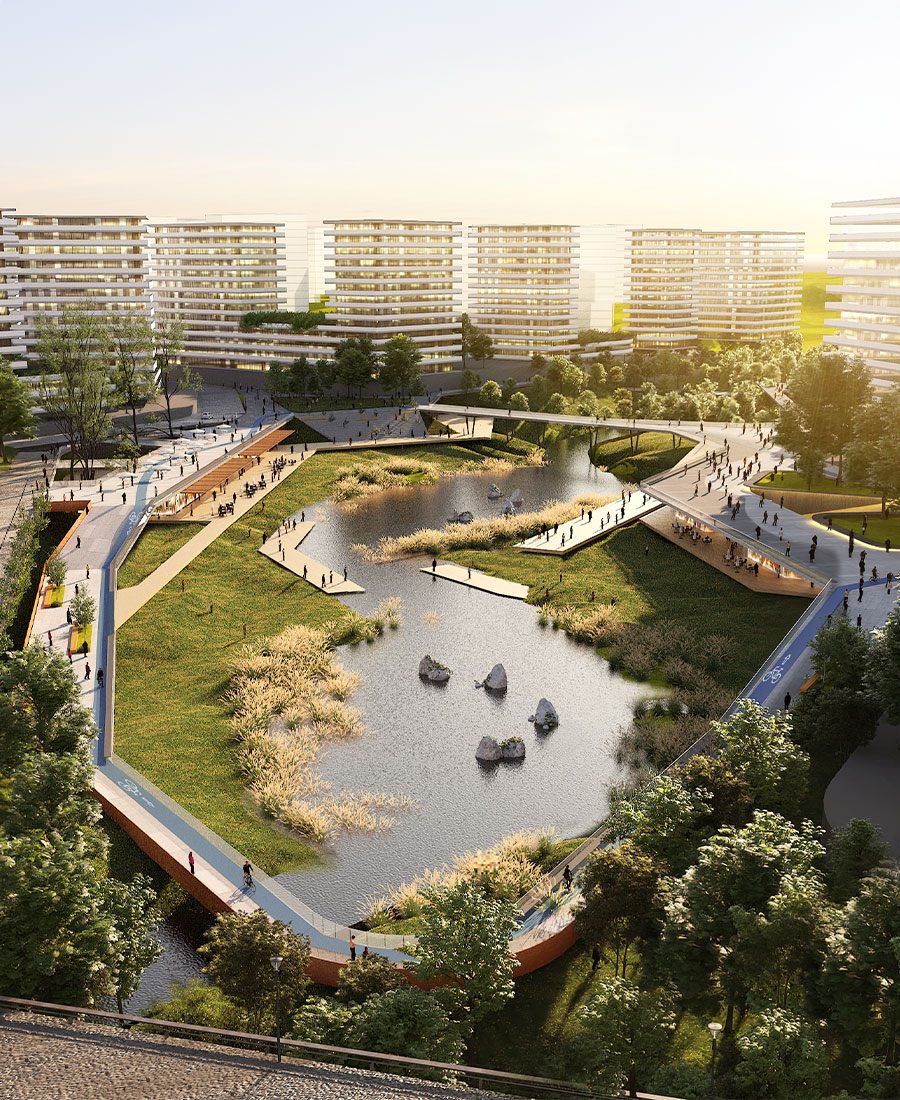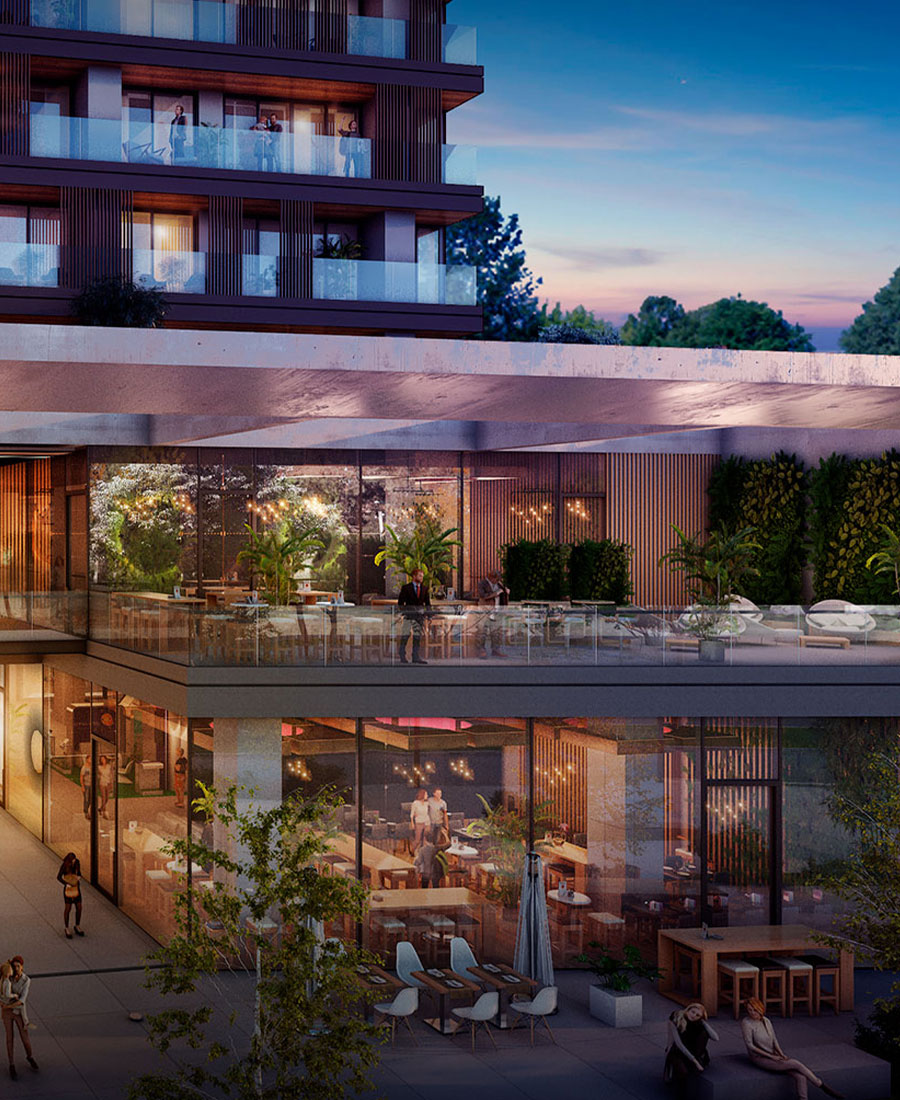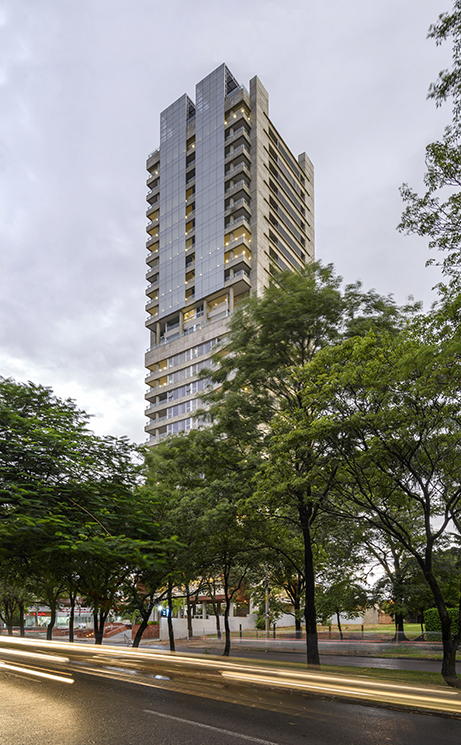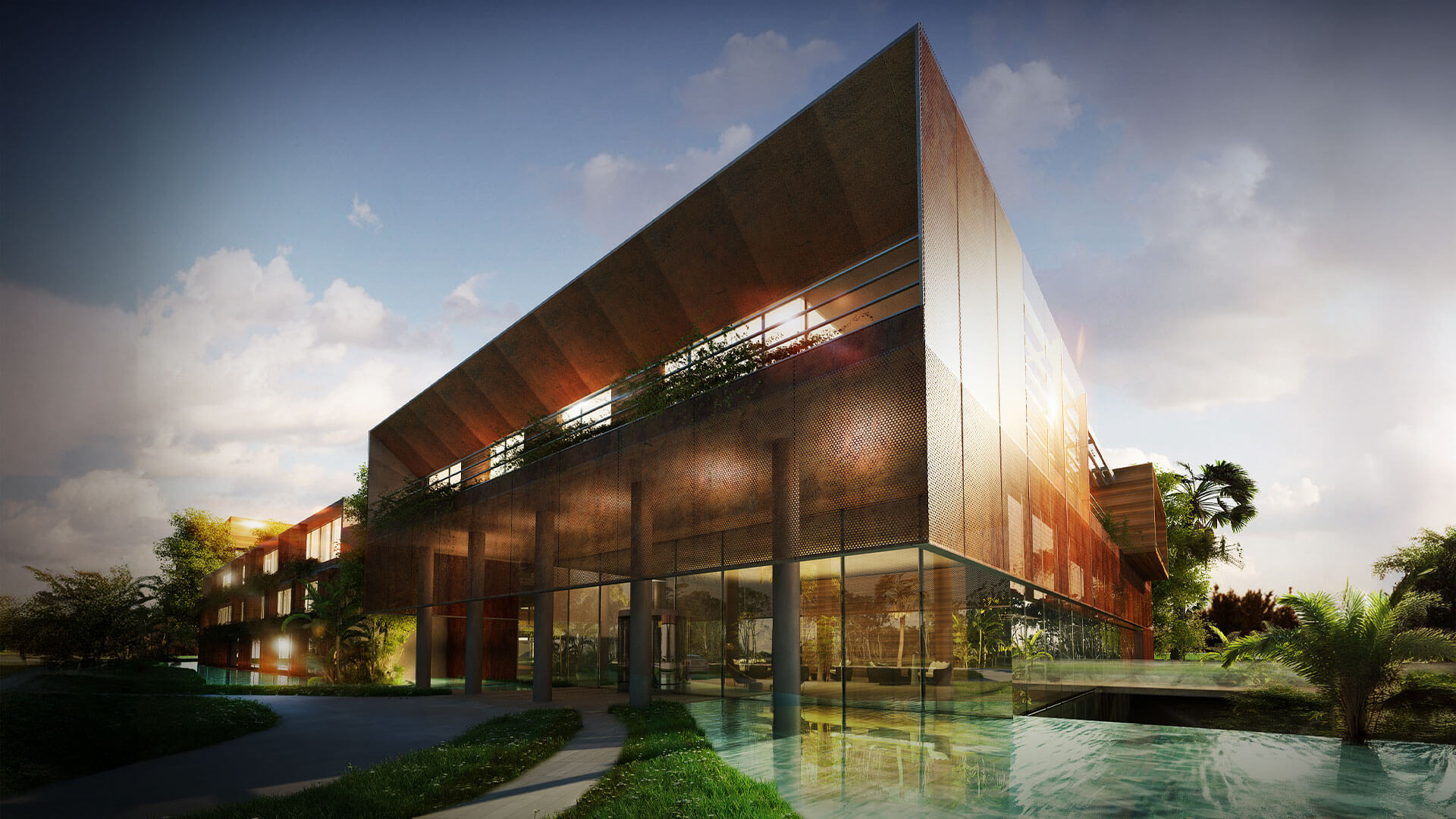

Reading time: 9 minutes
From a focus on well-being to the rise of hybrid spaces, hospitality design is undergoing a transformation driven by evolving economic, environmental, and technological factors. Beyond aesthetics, the design trends shaping 2025 aim to balance functionality and experience, adapting to the evolving expectations of modern travelers.
In an industry built to anticipate and fulfill guest needs, the architectural design of hotels and resorts plays a fundamental role in creating functional, memorable spaces that align with contemporary lifestyles. The diversification of hospitality environments allows for the simultaneous accommodation of various traveler profiles—families, couples, groups, and solo guests—offering tailored experiences that meet their specific needs.
In this context, models such as branded residences and extended-stay hotels reflect shifts in travel habits and the growing demand for greater comfort and personalization. At the same time, the concept of attainable luxury is gaining traction, driving interest in offerings that blend exclusivity with flexibility, redefining the future of hospitality.
The Rise of Third Spaces
Hotel architecture is moving away from conventional, compartmentalized layouts in favor of more fluid, purpose-driven spaces. Previously underutilized areas—such as oversized lobbies or redundant amenities—are being reimagined as dynamic, multifunctional environments that respond to the evolving needs of guests.
Lobbies, traditionally designed as transient spaces for check-in and check-out, have evolved into social and productivity hubs. Today, these areas integrate cafés, bars, co-working stations, and meeting spaces, offering a more versatile experience aligned with contemporary traveler habits. A prime example of this trend is Ace Hotels, which has transformed its lobbies into vibrant gathering spaces where locals and guests can work, socialize, or simply enjoy the atmosphere.
This shift is also evident in the rise of private members’ clubs within hotels, which not only foster a sense of community in urban settings but also serve as an ideal "third space" for the growing remote work culture. According to a JLL Hotels & Hospitality report, demand for co-working spaces in hotels has increased by 20% over the past five years, driven by the need for flexible environments that merge hospitality with productivity. Brands like Soho House and The Ned have capitalized on this trend, offering exclusive memberships that grant guests and residents access to work, networking, and leisure spaces in a single location.
By transforming underutilized areas into active, revenue-generating spaces, the hospitality industry not only enhances the guest experience but also optimizes its business model in an increasingly competitive market.
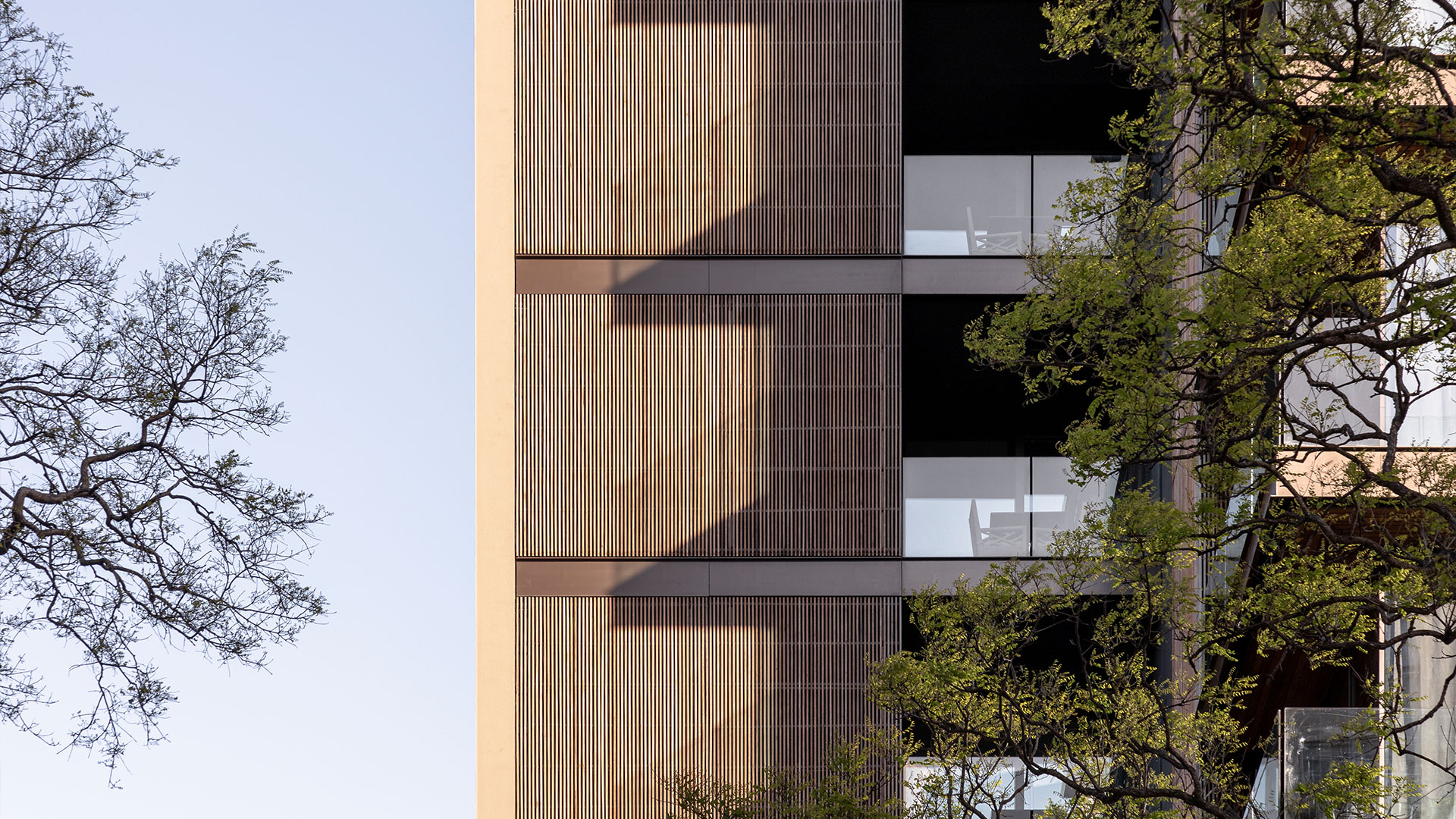
Montevideo Hotel | Uruguay
The Rise of Third Spaces
Hotel architecture is moving away from conventional, compartmentalized layouts in favor of more fluid, purpose-driven spaces. Previously underutilized areas—such as oversized lobbies or redundant amenities—are being reimagined as dynamic, multifunctional environments that respond to the evolving needs of guests.
Lobbies, traditionally designed as transient spaces for check-in and check-out, have evolved into social and productivity hubs. Today, these areas integrate cafés, bars, co-working stations, and meeting spaces, offering a more versatile experience aligned with contemporary traveler habits. A prime example of this trend is Ace Hotels, which has transformed its lobbies into vibrant gathering spaces where locals and guests can work, socialize, or simply enjoy the atmosphere.
This shift is also evident in the rise of private members’ clubs within hotels, which not only foster a sense of community in urban settings but also serve as an ideal "third space" for the growing remote work culture. According to a JLL Hotels & Hospitality report, demand for co-working spaces in hotels has increased by 20% over the past five years, driven by the need for flexible environments that merge hospitality with productivity. Brands like Soho House and The Ned have capitalized on this trend, offering exclusive memberships that grant guests and residents access to work, networking, and leisure spaces in a single location.
By transforming underutilized areas into active, revenue-generating spaces, the hospitality industry not only enhances the guest experience but also optimizes its business model in an increasingly competitive market.
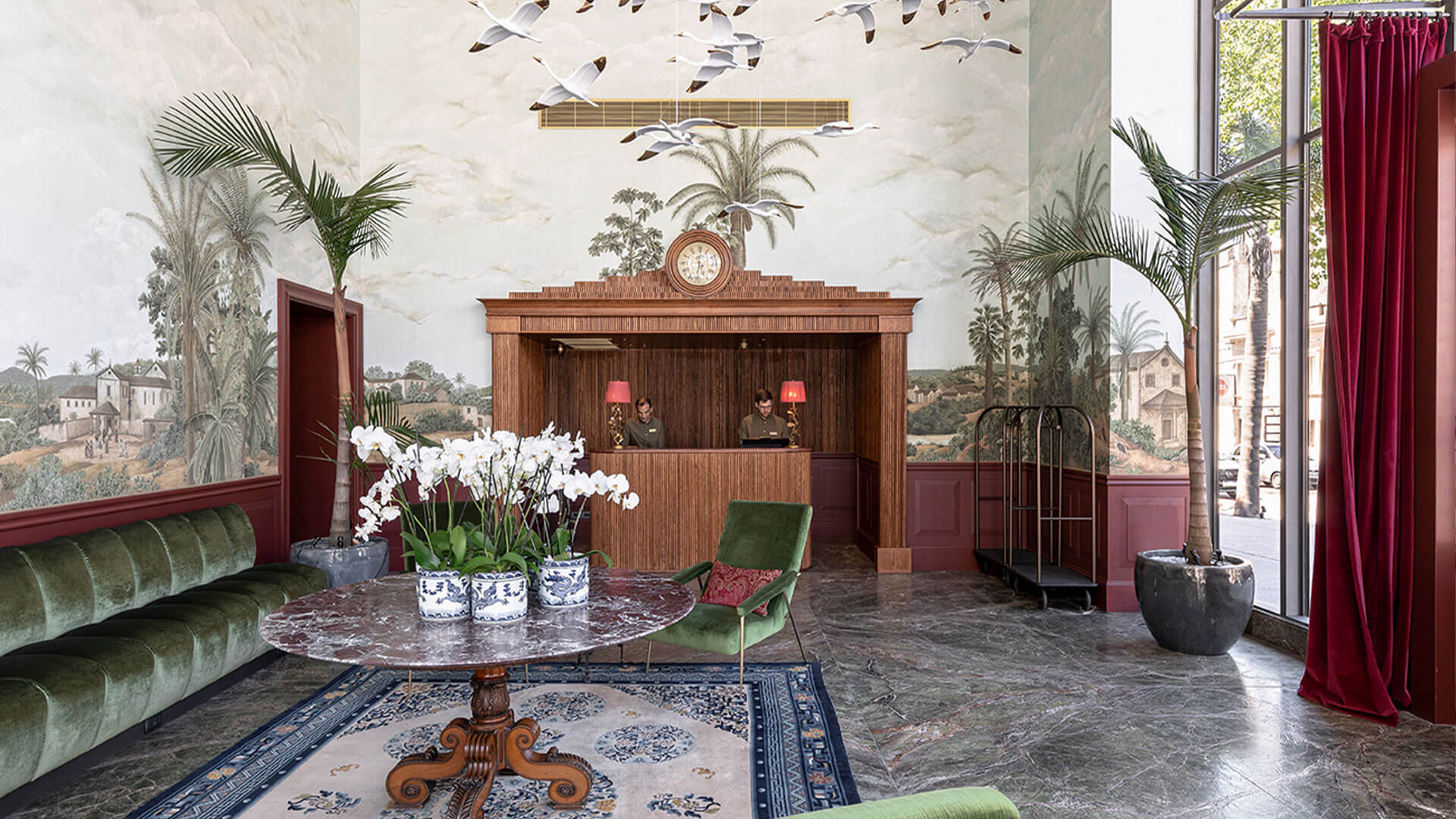
Montevideo Hotel | Uruguay
Attainable Luxury: Experience-Driven Sophistication
The digital revolution and social media have redefined luxury, democratizing visual access to high-end products and fostering reinterpretations and strategic collaborations. Today, brands prioritize the creation of immersive, emotional experiences over product exclusivity.
This evolution is particularly evident in the interior design of communal spaces in hotels and high-end residences, where the selection of materials, textures, and bespoke furnishings serves as a narrative tool. Thoughtfully curated elements not only reflect the cultural identity of a location but also contribute to visual balance, creating a layered sense of sophistication.
This approach, aligned with the "quiet luxury" trend, prioritizes a refined yet understated aesthetic, where craftsmanship and design take precedence over ostentation. The visual language is intentionally simplified, allowing architecture and interior design to convey exclusivity without resorting to excessive ornamentation. In contemporary hospitality, this concept redefines the guest experience, offering environments that balance comfort, identity, and an authentic emotional connection with space.
Personalization is Redefining Global Hospitality
For decades, major hotel chains replicated a standardized architectural model, applying it uniformly across different locations with little regard for local context. This approach prioritized brand consistency over cultural identity, resulting in spaces where guests could be anywhere in the world without perceiving significant differences. Architecture and interior design followed a globalized aesthetic, detached from the immediate cultural surroundings.
Today, the hospitality industry has shifted toward a more authentic and contextual approach. Design curation has become a key differentiator, allowing hotels within the same brand to adopt distinct identities based on their location.
This shift responds to the growing demand for localized, experience-driven stays. According to a Skift Research report, 73% of luxury travelers prefer hotels that reflect the destination’s culture in their design and service offerings. In response, major hotel chains have embraced a site-specific approach, integrating regional architectural elements and collaborating with local artisans to create a more authentic sense of place.
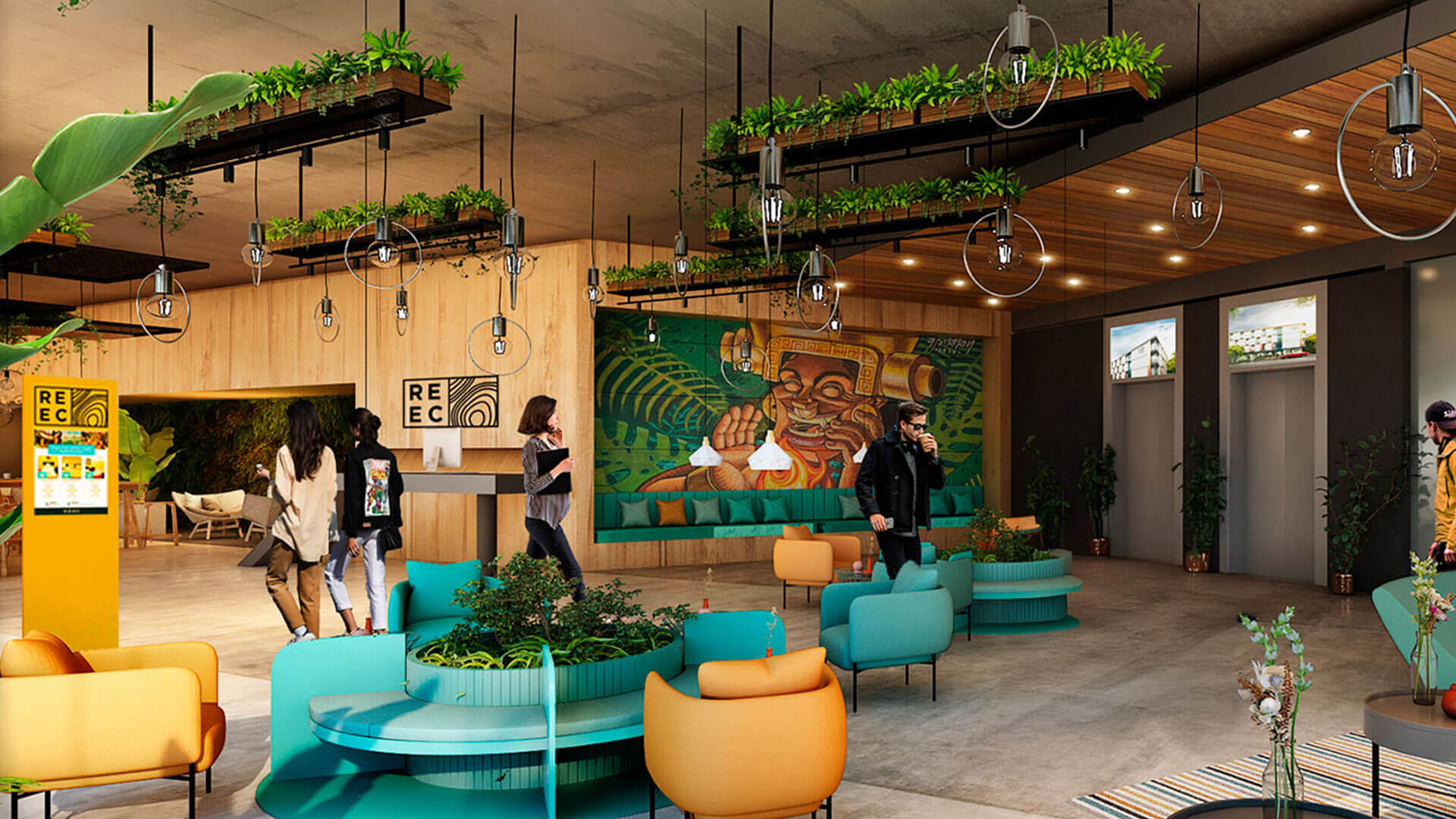
REEC | Ecuador
Branded Residences: A Model in Expansion
Far from fading, brand affiliation in hospitality is evolving into a more sophisticated and profitable model: branded residences. This format, which merges the exclusivity of luxury real estate with the operational standards of major hotel chains, has proven to be a highly attractive strategy for both developers and investors. According to a Savills International Development Consultancy report, the branded residences market has grown by 160% over the past decade, with more than 640 projects in development worldwide.
The appeal of this model lies in its ability to extend a hotel brand’s identity and prestige beyond temporary stays, offering property owners a residential experience aligned with the brand’s values. Iconic examples include the Armani Hotel & Residences in Dubai, the Bulgari Hotel & Residences in London, and the Versace Residences in Australia, where design, architecture, and services reflect each brand’s essence.
For developers, branded residences represent an effective strategy to mitigate financial risk and attract high-net-worth buyers seeking not just a property but a lifestyle experience backed by a prestigious name.
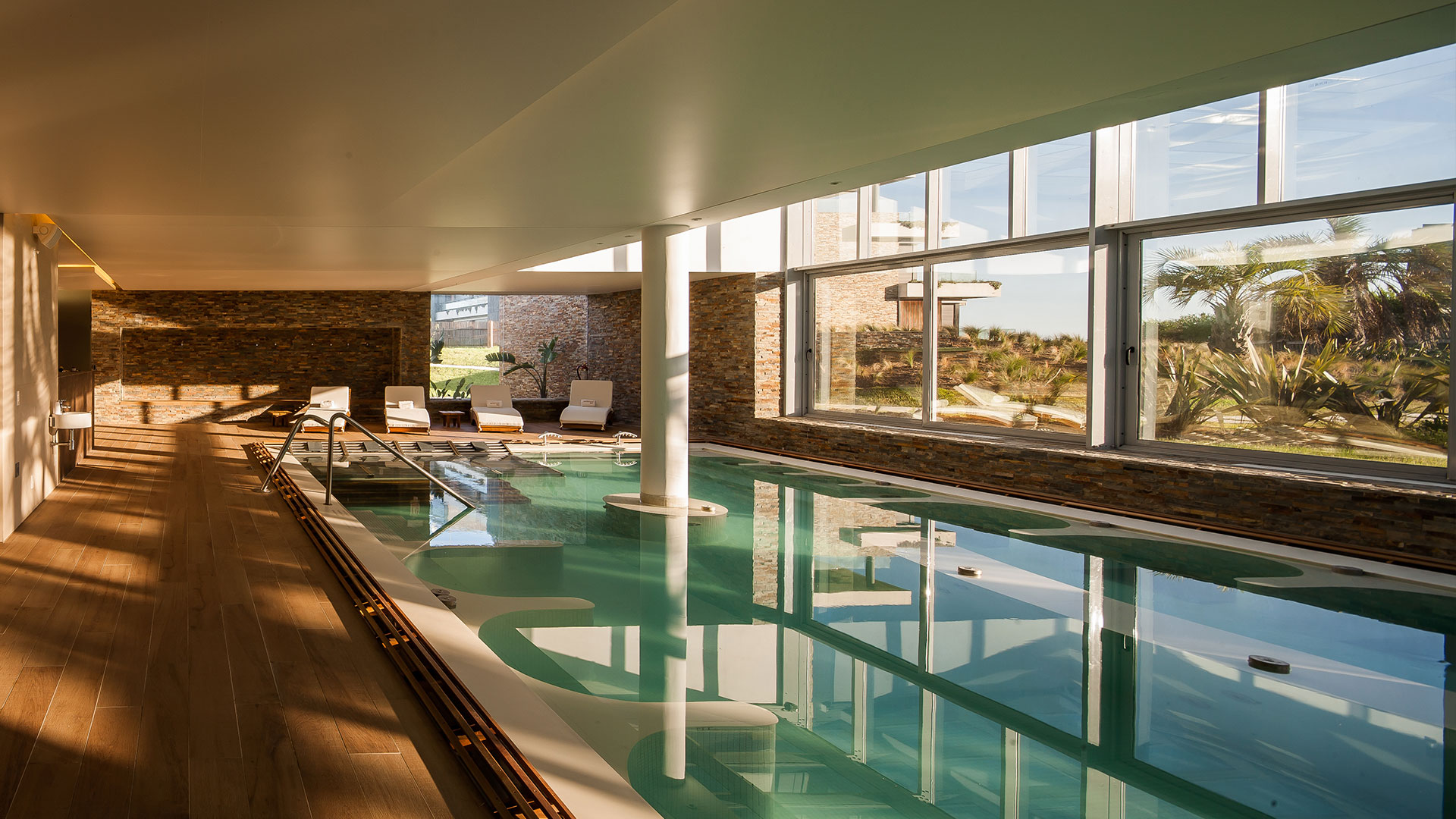
Selenza Spa | Uruguay
Wellness as a Design Imperative
Wellness is no longer an optional amenity in hospitality—it has become a core expectation for guests. Gone are the days when hotel gyms and spas were afterthoughts or featured outdated equipment. Today, according to a Savills Hotels report, 82% of luxury travelers consider wellness a key factor when choosing a hotel, prompting brands to redefine their value proposition.
This trend translates into a holistic approach that encompasses architecture, interior design, and service offerings. Wellness-oriented amenities—such as state-of-the-art fitness centers, therapeutic spas, and curated nutrition programs—have become essential features in high-end hotels.
One of the most notable shifts is the integration of wellness elements within guest rooms, including circadian lighting, meditation spaces, and in-room fitness equipment. Brands like Equinox Hotels have taken this trend further, designing rooms optimized for rest and physical recovery, featuring high-performance mattresses and advanced climate and sound control systems.
Meanwhile, the traditional spa model is evolving into more immersive and social wellness experiences. New concepts include co-ed hydrotherapy areas, cold immersion pools, and thermal circuits, inspired by ancient wellness traditions.
This approach not only meets guest demand but also represents a key strategy for differentiation and profitability in the hospitality industry.
The Future of Hospitality: Flexible, Personalized, and Experiential
The evolution of hospitality reflects a fundamental shift in how travelers experience hotel spaces and services. Personalization, wellness integration, and the redefinition of communal areas have moved beyond trends to become strategic pillars of hotel design. The industry is adapting to a guest who seeks authentic, flexible experiences aligned with their lifestyle.
As the sector continues to innovate, the key to success will lie in hotels’ ability to balance functionality, identity, and exclusivity while maintaining profitability. The future of hospitality will not only offer a place to stay but an environment designed to connect, inspire, and enhance each guest’s quality of life.

